NETHERLANDS
Plants and Animals

Plants and Animals

Cities in NETHERLANDS
| Amsterdam | Eindhoven | Maastricht |
| Rotterdam | The hague |
Plants and Animals
Plants
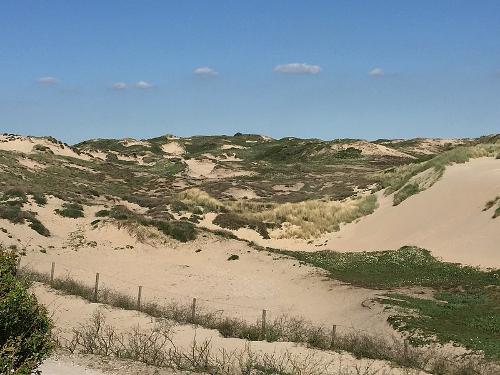 Dunes Netherlands, in between Katwijk and Noordwijk, NetherlandsPhoto:Paul Arps CC 2.0 Generic no changes made
Dunes Netherlands, in between Katwijk and Noordwijk, NetherlandsPhoto:Paul Arps CC 2.0 Generic no changes made
The vegetation is very varied as a result of the variation in and within the landscapes. A number of landscapes are even unique to Europe or at least very special. Examples include the dune area along the coast and the entirety of salt marshes and overgrown beach plains. The large low peat bogs near Nieuwkoop, in the Vecht region, Northwest Overijssel and Friesland are nowhere else in Western and Southern Europe. The Oostvaardersplassen in Flevoland created by reclamation are also unique.
In the east and south are moraines, heaths, high moors, fens and deciduous forests, river valleys, streams and springs, each with its own characteristic vegetation. In South Limburg there is a plateau landscape with varied vegetation in the valleys, partly bound to the lime that occurs there, which differs greatly from the rest of the Netherlands.
The diversity is exacerbated by regional climatic differences and, moreover, for thousands of years, man has influenced landscapes and vegetation, mainly through small-scale and varied agriculture. If human influence were to disappear, the land, if not disappearing below sea level, would become overwhelmingly overgrown with a small number of forest vegetation types, which are still present today, in part as remnants of original vegetation.
Over the centuries, man has gradually replaced the originally wooded land with stable semi-natural landscapes such as heaths, blue grasslands and other scrape lands, reed lands and chalk-slope grasslands, increasing the variety of vegetation. The primeval forests were cut down or burned down over the course of history for fields, villages, roads and cities. In 1876 the last primeval forest with the felling of the Beekberger forest near Apeldoorn disappeared.
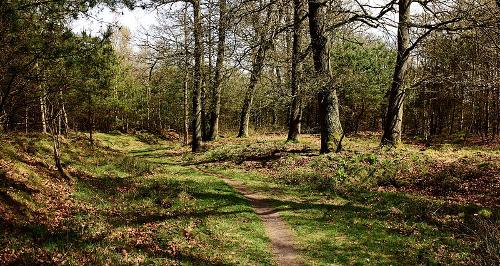 The Loo Royal EstatePhoto: Agnes Monkelbaan CC 4.0 International no changes made
The Loo Royal EstatePhoto: Agnes Monkelbaan CC 4.0 International no changes made
Around 1870, only 3% of the land area of the Netherlands was forest. At the moment, this has risen to more than 9%, mainly due to new plantings with often exotic species. Many site managers are now rejuvenating the forest naturally and are planting more and more native species. An example of this are the Royal forests Het Loo near Apeldoorn, which are now managed in a natural way. Other examples of somewhat natural forest in South Limburg are the Savelsbos and Petit Gravier.
Until the 20th century, these landscapes occupied a much larger area than the cultivated land, such as fields and meadows. In the 20th century, plant growth deteriorated due to increasing housing construction, industrialization and scaling up in many areas, which led to, among other things, environmental pollution, road construction and the use of herbicides and pesticides.
Below is a brief description of the flora in various landscapes and areas:
The coastal dune flora of the lime-poor Wadden district is characterized by, among other things, sea breeze, sea oats and sea thistle. The flora of the inner dunes includes sea buckthorn, dune rose and bud rush. Furthermore, we find typical dune vegetation in this area such as heather, heather, gorse, bearberry, roseberry, crow heather and dyed gorse.
In the inner dune of the dune district you can find species that are bound to lime, such as wild privet, barberry, buckthorn, and cardinal's cap. We also find here zoom vegetation such as night elm, three thistle and rough violet. Many other species indicate that the climate here is also warmer than in the Wadden district.
The areas along the major rivers in Zeeland and on the South Holland islands are characterized by many Central European species such as meadow sage, cypress spurge, field bell, marjoram, small diamond, English alant, mercury, pennyroyal, angelica. These plants need calcareous dry sand, calcareous clay or are found on often overflowing river banks.
The Hafistrict in North and South Holland, Utrecht, Overijssel, Friesland and Groningen is characterized by many lakes and marshes and cultivated polder land. Some typical species for this area are: swamp spurge, swamp lathyrus, nymphwort and moor grass. Some typical species of nutrient-rich swamps are water gentian, common bladderwort, snake root, and fountain weeds.
In the Drenthe district heaths and the almost disappeared high moors are the most characteristic. Here and in the forests and swamps occur, among others: heather, broom and holly, but also originally northern species such as crow heather, seven star, Linnaeus bell, Swedish dogwood and Nordic sedge.
In the Gelderland district, the northern influence is much less and the influence of running water, on the other hand, is greater. This region is very important for the little dewclaw, but much less important for small salsify and heather sedge, for example.
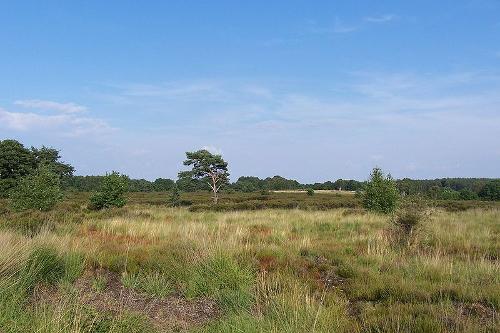 Heather in the Kempen, NetherlandsPhoto: KB72 CC 3.0 Unported no changes made
Heather in the Kempen, NetherlandsPhoto: KB72 CC 3.0 Unported no changes made
The Kempens district is located in North Brabant and part of Limburg. The northern species are almost non-existent here. The heathlands are remarkably poor, the forests and stream valleys, on the other hand, rich in species. Characteristic are, among others, cormorant, creeping water plantain and a number of almost disappeared species, for example kranscarwij.
Many deciduous forests with Central European flora are found in parts of East Twente, the Achterhoek, the Rijk van Nijmegen and East Limburg. Here you can find yew, sweet cherry, black rapunzel, yellow dead nettle, whole herb, and gold veal.
The flora in the chalk district in the extreme south of the Netherlands differs strongly from the rest of the country due to a more continental and locally calcareous soil. Special plants here include mistletoe, pepper tree, christoffel herb, sweet woodruff, white field rush, fringed gentian and 13 types of orchids.
In early October 2010, an extinct mushroom in the Netherlands since 1971 was discovered in a forest near Schoorl (North Holland). It is a pine porcini mushroom. Mycologists had been searching in vain for the mushroom on drifting sands inland for years, where the fungus had last been seen. Research by the National Herbarium showed that it was Boletus pinophilus.
Animals
The animal world in the Netherlands is relatively poor due to a large number of factors. Real natural landscapes only occur on a very small scale due to, among other things, the strong urbanization. Because of this urbanization, for example, mountain and rock inhabitants such as black redstart and swift became city dwellers. Large-scale reclamation, especially in the Zuiderzee and Delta Works, greatly increased the freshwater surface, but the fauna in the Waddenzee, for example, was again negatively affected.
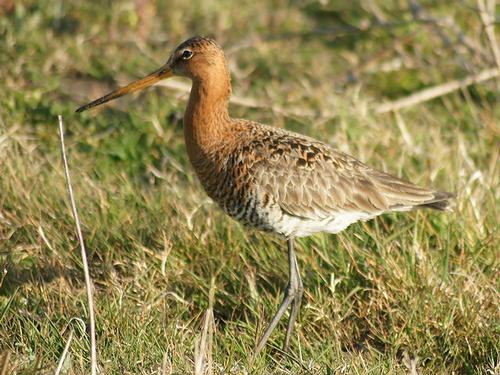 Black-tailed godwit, national bird of the NetherlandsPhoto: Hans Hillewaert CC 4.0 International no changes made
Black-tailed godwit, national bird of the NetherlandsPhoto: Hans Hillewaert CC 4.0 International no changes made
The monocultures of arable, pasture and forestry also had a major influence on the fauna. Certain animal species, often harmful, were attracted to it and others disappeared. In recent decades, environmental pollution has contributed greatly to the impoverishment of fauna, not least that of fresh water. The national bird of the Netherlands, the godwit, a meadow bird, is also struggling. Since the 1960s, the black-tailed godwits population has decreased by about 70%; in 2020 there were approximately 30,000 couples left.
A remarkable phenomenon is that in addition to the disappearance of a number of animal species, the emergence of others can also be observed. For example, the collared dove has only been breeding in the Netherlands since 1950 and is now found throughout the Netherlands. Birds such as blackbird, thrush, European canary and black woodpecker were also able to expand their habitat considerably. Other animal species could just be preserved or have been released again, including greylag goose, night heron, hawk, raven, red deer, roe deer, and wild boar. Predators such as badgers and martens can hardly survive through smaller and smaller hunting areas with less and less prey.
Species that have become extinct in the Netherlands due to the increasing population and advancing deforestation include aurochs, brown bear, wolf, wildcat and beaver, which were successfully reintroduced to the Biesbosch in 1988.
Intentionally or unintentionally imported animals are now common. Examples include rabbit, muskrat, pheasant, zander and Chinese mitten crab. In a somewhat more limited area, mouflon, fallow deer and coypu are present.
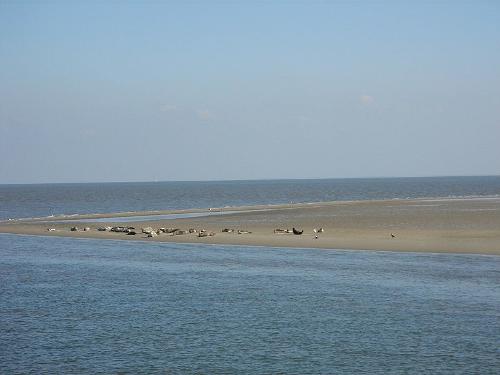 Wadden Sea - Seals on a SandbankPhoto: Txllxt TxllxT CC 4.0 International no changes made
Wadden Sea - Seals on a SandbankPhoto: Txllxt TxllxT CC 4.0 International no changes made
The shallow coastal waters of the North Sea and the Wadden Sea also have a limited diversity of species, although large numbers of one species can occur. The Wadden Sea is of great importance as a breeding ground for numerous organisms living in the sea, of which the seal and porpoise are the largest.
In South Limburg, through the Ardennes Central European many animal species occur that do not occur elsewhere in the Netherlands. However, most species are rare and in danger of extinction, including acorn mouse, wall lizard, fire toad, midwife toad, brown trout and vine snail. South Limburg is also of great importance because of the many caves where bats overwinter in large numbers. In 2003 it was announced that the number of bats is increasing again. Seven species, bearded bat, fringed tail, long-eared bat, potted bat, lake bat, long-tailed bat and water bat, had more than doubled in numbers since 1990. In 2020, the pipistrelle bat was by far the most seen during a bat count, followed by the late kite, red-tailed bat, long-eared bat, water bat and lake bat. The rare field hamster or European hamster is also found in South Limburg, which is called "korenwolf" in South Limburg.
In 2010, the Netherlands gained 24 new animal species, 23 types of insects and a jellyfish. New species include the alfalfa wallpaper and the scaly hair cone bee. In addition, 17 new species of bronze wasps have been found, including the golden gold wasp, which parasitizes other wasps and bees. The stem jellyfish was spotted in the Oosterschelde.
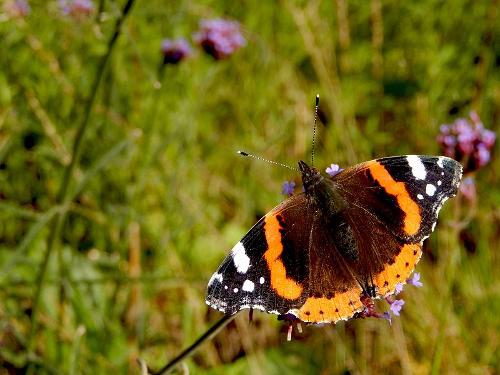 Atalanta butterfly, NetherlandsPhoto: Kars Veling CC 4.0 International no changes made
Atalanta butterfly, NetherlandsPhoto: Kars Veling CC 4.0 International no changes made
A butterfly count in 2015 revealed that the red-throated butterfly was the most frequently counted butterfly. In second place was the day peacock, followed by the small cabbage white, the large cabbage white and the lemon butterfly. Outside the top-5 were among others the small fox, the large reflective butterfly and the variegated sand eye.
Sources
Haafkens, M. / Nederland
Gottmer
Harmans, G.L.M. / Nederland
Van Reemst
Metze, M. / De staat van Nederland
SUN
Ver Berkmoes, R. / Netherlands
Lonely Planet
CIA - World Factbook
BBC - Country Profiles
Last updated June 2025Copyright: Team The World of Info